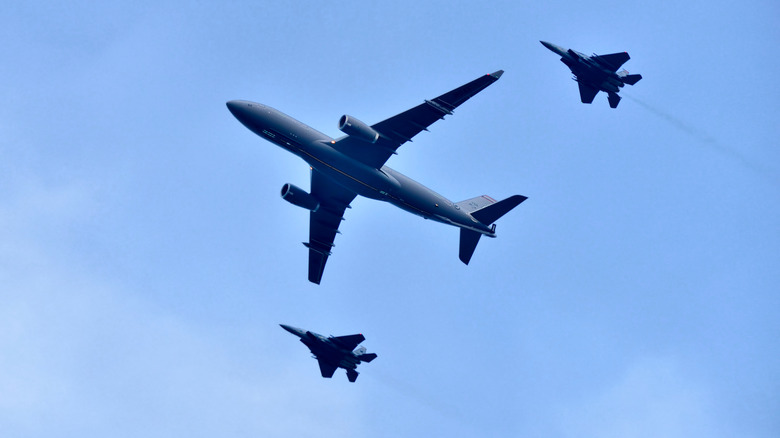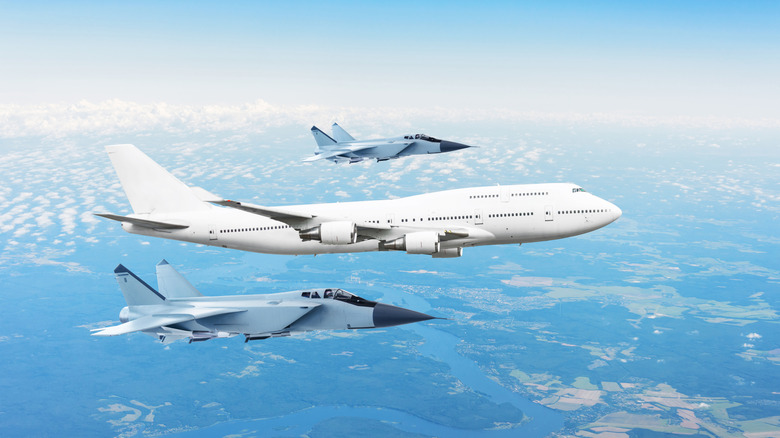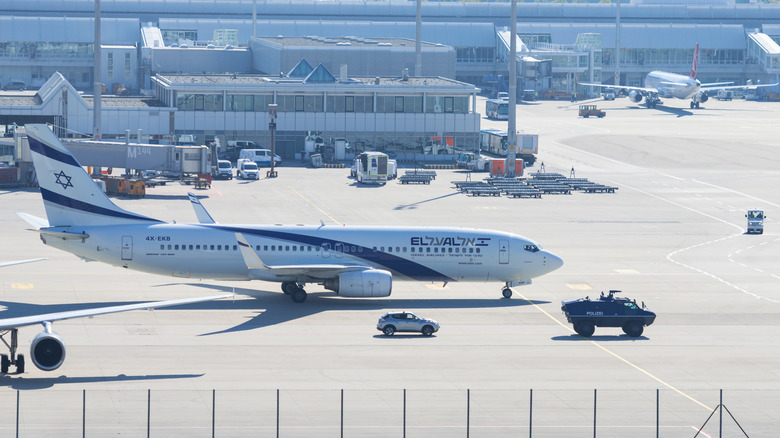Why Passenger Planes Are Occasionally Escorted By Fighter Jets
Seeing fighter jets outside your window is one of the rarest things that can happen on a commercial flight. It usually means air traffic control can't reach the pilots or there's been a reported threat onboard. Communication failures are the most common reason. If a plane stops responding to calls on emergency frequencies, the air force may send jets to check on it. The fighters pull alongside, look for visible issues, and try to signal the crew. These interceptions also happen when an aircraft strays near restricted military airspace.
It doesn't always mean danger, but until controllers know what's happening, they need to treat the situation seriously. In some cases, pilots themselves request an escort after reporting a safety concern, like a bomb threat. That's what happened in February 2025 when American Airlines Flight 292, bound for New Delhi, turned back and landed in Rome. Two Italian Eurofighters — among the most agile fighter jets in the world – shadowed the Boeing 787 until it was safely on the ground. The bomb threat was later found to be false, but the escort remained necessary under protocol.
What happens during an escort
Once scrambled, fighters are airborne within minutes. Their first job is to identify the aircraft and establish some form of communication. Pilots can use radios, flashing lights, or hand signals. They also perform close inspections, scanning the fuselage and cargo doors for anything unusual. From the ground, commanders receive live updates before deciding how to proceed. Sometimes, fighters must accelerate to supersonic speed to intercept quickly, which produces a sonic boom. Interceptions are among the few situations when military aircraft are allowed to break the sound barrier. Residents across Kent and Essex heard one in August 2025 when RAF Typhoons responded to a plane that had lost contact.
After communication is restored or the threat is contained, fighters escort the airliner to a designated airport. Passengers rarely get details midair, and reports of fighter jets can understandably cause panic. Yet the routine is designed to minimize risk. Even in confirmed hoaxes, such as the EasyJet flight to Menorca in 2022, military escorts ensured the aircraft landed safely before security teams cleared passengers and baggage.
After the plane lands
An escorted flight always undergoes additional checks once it touches down. Law enforcement and airport security meet the aircraft, sometimes with fire trucks on standby. Passengers are usually bused to the terminal and screened again along with their belongings. Baggage inspections can delay the process for hours, as seen in Rome after Flight 292 diverted. Authorities don't assume anything is harmless until the plane and its cargo are cleared.
Hoaxes, like the social media bomb threat that delayed the EasyJet service to Menorca, can still disrupt airports and cost airlines millions. In the U.S. and Canada, NORAD handles similar responses, deploying F-16s when necessary, even if the threat proves false. Protocols are strict because the stakes are high. Since 9/11, any hint of hijacking or explosives is treated as credible until proven otherwise. That's why fighters sometimes appear beside commercial aircraft: not to alarm, but to guarantee safety until every possibility is ruled out.


